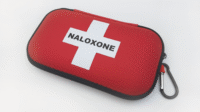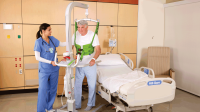Your knowledge of the fundamentals can prevent harm.
- Nurses can ensure safe practices by becoming well informed about specific medications, their actions, metabolism, and drug-drug interactions.
- Understanding why guidelines are developed and used in clinical practice promotes safe, competent drug selection and use.
- Food and Drug Administration Black Box Warnings have relevance within nursing practice.
- Explain what determines best practice evidence in medication safety.
- Identify levels of scientific evidence considered in developing clinical practice guidelines.
- Describe drug development safety issues of concern to federal agencies.
No relevant financial relationships were identified for any individuals with the ability to control content of the activity.
Expiration: 11/1/27
In a Centers for Disease Control and Prevention (CDC) blog, Nahum reports that, globally, more people die from medical errors or other healthcare quality and safety issues than from lack of access. Makary and Daniel and James estimate that 400,000 Americans die each year as a result of medication errors and other preventable causes during hospitalization.
Medication safety and pediatric health
The nurse’s role in medication safety
In 2016, the CDC identified unintentional death (which included medical mistakes) as the third leading cause of death in the United States, after cardiac disease and malignancy. During the same year, patient safety experts at Johns Hopkins released data from an 8-year analysis, which suggested that more than 250,000 Americans die every year from medical errors.
Other reports have claimed annual mortality numbers to be as high as 440,000. The CDC’s Healthy People 2030 indicated that annual adverse drug events (ADEs) or harm resulting from medication errors had led to 1.3 million emergency department (ED) encounters, 350,000 hospitalizations, and over $3.5 billion in excess medical costs. This report named ADEs a serious public health problem and noted that most of the instances are preventable. In 2024, the CDC again identified unintentional death as the third leading cause of death.
In 2023, the CDC reported that the most common types of ADEs are associated with allergic reactions, side effects, over-medication, medication errors, and drug–drug interactions. The most problematic medications that lead to emergency ADEs include anticoagulants, diabetes medications, antibiotics, and opioid analgesics. The CDC predicts an increase in ADEs because of healthcare advances in new drug development, older medications with new indications for use, an aging population, reliance on the use of medications to manage disease and prevention, and the expansion of prescription drug coverage.
When nurses understand what determines evidence, how to implement guidelines as standard of care, and what establishes best practices to optimize medication safety, they can help prevent medication errors.
Knowledge vs. anecdote
Nurses work to ensure the safe delivery of medications, so they should remain current and knowledgeable about medication updates, side-effects, allergic reactions, drug–drug interactions, and changes in guideline recommendations. Don’t rely solely on the prescriber or make assumptions without adequate knowledge and understanding of prescription and non-prescription medications used by individual patients.
A recent review of nursing literature by Fossum and colleagues found that nurses frequently turn to colleagues and peers for clinical information rather than seeking specific evidence. This integrative review found that nurses typically used their own and other professionals’ clinical experience to guide decision-making despite having access to reference materials, online resources, and nursing journals.
New nurses and medication safety
According to a 2022 survey by the American Nurses Foundation (ANF), 30% of nurse respondents with less than 2 years of experience reported not feeling well-prepared to practice. Feeling unprepared to practice can impact knowledge, understanding, and skill in the safe delivery of medications, which in turn can place patients at risk.
The Institute for Safe Medication Practices and the ECRI (a non-profit organization committed to improving safety, quality, and cost-effective care across all healthcare settings) released a white paper that identifies the issues reported by ANF and acknowledges them as the primary patient safety concern. The paper discusses the challenges of transitioning newly trained nurses from education into practice without sufficient preparation, support, and training, which can increase the risk for preventable harm. New nurses who experience a loss of confidence, burnout, and reduced mindfulness in a culture of safety can fail to recognize and rescue patients from medication mishaps.
Evidence-based practice
When you implement evidence-based practice (EBP) you rely on sound scientific data to promote safe clinical decision-making. You know where to find the best available data to ensure accurate medication delivery. The three-legged stool of EBP depends on scientific evidence, professional experience, and patient experiences and preferences. (See Where to find the best evidence.)
Where to find the best evidence
Access the following evidence-based resources to support the implementation of best clinical practice and ensure safe medication use and delivery.
- Cochrane (meta-analysis, systematic reviews).
cochrane.org/about-us - Cumulative Index to Nursing & Allied Health Literature (journal database)
ebsco.com/products/research-databases/cinahl-database - Johns Hopkins Center for Evidence-Based Practice (leadership, support, and training in use of the Johns Hopkins EBP model).
hopkinsmedicine.org/evidence-based-practice - McMaster University. Resources for evidence-based practice: About EBP (information about the core concepts of EBP and additional resources)
hslmcmaster.libguides.com/ebm/ebp - Multiple Chronic Conditions Resource Center (clinical practice resources and guidelines)
multiplechronicconditions.org - Ovid MEDLINE Advantage (journal database)
wolterskluwer.com/en/solutions/ovid/ovid-medline-advantage-2024-15713 - PubMed—National Library of Medicine (journal database)
pubmed.ncbi.nlm.nih.gov
Levels of evidence
When considering scientific evidence for medication safety, you should know how to discern the best data and how to implement it into routine clinical practice. Randomized controlled trials (RCTs), considered the highest level of evidence, generate unbiased outcomes with less risk for erroneous data. However, you must be able to identify good data from well-designed studies that recruit a significant number of subjects to statistically power the research and show meaningful outcomes. All medications must undergo rigorous RCTs before approval by the U.S. Food and Drug Administration (FDA) and release to the public.
The second level of evidence includes systematic reviews or meta-analyses of multiple RCTs that share the same endpoint or outcome. Although these reviews and analyses comprise an important form of evidence, researchers or authors of this type of study have some bias regarding data interpretation. Evidence-based clinical practice guidelines include both RCTs and meta-analyses along with expert opinion.
Guidelines are considered the gold-standard when directing clinical decision-making, prescribing one medication over another, or adding concomitant medications to manage a specific medical condition. Lawyers frequently use guideline recommendations in liability matters that question why a provider chose an intervention or used an off-label medication for a specific condition. For example, beta blockers aren’t considered first-line therapy in hypertension management; metformin is considered a first-line intervention in type 2 diabetes; and aspirin is no longer considered preventive in patients who haven’t had a heart attack, an embolism, or atrial fibrillation. (See Guidelines: Management of common conditions.)
Guidelines: Management of common conditions
The following table notes the guidelines for four common conditions and where to find them.
Case examples or opinion carry bias and serve as the lowest level of evidence. Anecdotal practice or relying on self or others not only increases liability but also places the patient, nurse, and organization at significant risk.
Drug development and safety
Long before a manufacturer introduces a drug into the market, it must undergo rigorous research and development (R&D). This process includes basic research, drug discovery, preclinical testing, three-phases of extensive clinical trials in humans, and regulatory approval by the FDA. Typically, this process takes 10 to 15 years.
A drug begins with a small protein molecule or biologic that’s formulated to work within the chemical pathway of an abnormal cell. Initially, R&D focus on the molecular level, which identifies a potential physiologic target for a new drug. This comprehensive research spans several years.
After R&D, the preclinical investigation occurs. This includes laboratory and animal studies, which evaluate the safety and efficacy of a drug within a biological system. This area of drug development investigates toxicity and helps to determine appropriate dosing before moving to the human phases of drug evaluation. After the completion of human trials, the FDA collects and reviews all data to determine the drug’s safety and efficacy before granting approval. (See Human trials.)
Human trials
Drugs must go through three phases of human clinical trials before approval by the U.S. Food and Drug Administration.
Phase 1
Phase 2
Phase 3
Drug–drug interactions, metabolism, and safety
Your knowledge about how a specific drug works within the human body and how one drug may interact with another supports patient safety. In addition, you should understand how five or more medications prescribed to manage a condition can lead to polypharmacy and impact a patient’s quality of life.
The extensive research that brings a drug to approval by the FDA involves examining the drug’s metabolizing properties, which include the pharmacodynamics (action of the drug on the human body) and pharmacokinetics (how the human body reacts to a specific drug over time). Together, these properties determine a drug’s safety. The science of drug metabolism is beyond the scope of this article, but your working knowledge of drug classification and action can help promote patient safety by recognizing potential side-effects or adverse physical findings.
Most medications are metabolized via a series of enzymes (the cytochrome P450 enzyme system [CYP]) primarily found in the liver. These enzymes also are found in the intestines, kidneys, lungs, and plasma. Approximately 80% of medications pass through this system, which also is affected by a patient’s specific genotype or the ability to metabolize an individual medication rapidly or slowly. Drug interactions typically are determined based on whether one CYP enzyme competes or cancels out the effects of a drug. For example, grapefruit juice affects over 85 medications. It inhibits or increases the potency of these drugs when they pass through the small intestine. Several resources can guide you when considering the effects of P450 enzymes on specific drug–drug interactions and metabolism.
Also consider drugs that bind to the central nervous system (CNS) such as opioids, benzodiazepines, muscle relaxants, hypnotics, and anticholinergics. These drugs, when combined with other substances such as alcohol, can suppress the respiratory system and lead to drug overdose or death. Using more than one opioid at a time, for example, can cause competition among the drugs for the same CNS receptor site. This can trigger excessive opioid metabolites in the systemic circulation, creating side effects that lead to elevated risk for opioid tolerance and require dosing escalation, which could easily be prevented.
In addition, some hepatic or renal conditions may delay or prevent a drug from being metabolized in the liver or excreted by the kidney. For example, hepatitis, non-alcoholic fatty liver disease, cirrhosis, and metastatic disease of the liver interfere with the metabolism of most drugs. Chronic kidney disease, renal insufficiency, and dialysis will delay drug excretion from the body.
Federal focus on safety
Several federal agencies—including the CDC, FDA, Agency for Healthcare Research and Quality, and Substance Abuse and Mental Health Services Administration—have created and disseminated safe drug delivery resources and initiatives for healthcare professionals, patients, and caregivers. One of the most comprehensive and thorough resources about a specific drug can be found in the drug’s package insert (PI).
The FDA mandates that drug manufacturers include one copy of an authorized PI in each container of drug dispensed. The PI ensures that prescribers, pharmacists, and other healthcare professionals properly dispense drugs based on their approved indication to minimize associated risk-factors. The FDA requires inclusion of the following 16 elements in the PI: prescribing information, indication for use, dosage and administration, contraindications, warnings and precautions, adverse reactions, drug interactions, use in specific patient populations, overdose, description, clinical pharmacology, clinical studies, references, supply/storage and handling, revised labeling, and patient counseling information. When you want to learn more about a specific drug, the PI provides comprehensive information to ensure understanding, knowledge, and safe drug delivery.
FDA black box warning
The black box warning serves as the FDAs most stringent alert to the public and healthcare professionals. Currently, over 400 drugs carry an FDA mandated black box warning. Before the FDA issues a boxed warning for any drug, enough evidence must exist to suggest the drug poses a significant risk. This evidence usually comes from studies conducted after the FDA has approved a drug and it’s been on the market. This indicates the need for caution with newer medications, which may have unknown or potential serious side effects.
The black box warning highlights the risks associated with a drug that’s been shown to cause potentially fatal, life-threating, or permanently disabling ADEs. Frequently, this means that the risks of a specific drug outweigh its benefits. A black box warning also suggests that ADEs can be avoided or reduced by using the drug appropriately in select patient populations and by avoiding drug–drug contraindications. (See Black box warnings.)
Black box warnings
The U.S. Food and Drug Administration mandates black box warnings on over 400 drugs, including following:
Antidepressants
Increased risk of suicidal thoughts and behaviors in children and adolescents with major depressive disorder.
Benzodiazepines
Serious risk of misuse, addiction, dependence, and withdrawal. Significant risk of central nervous system depression when used together with opioids.
FLUOROQUINOLONES
Can increase the risk of tendonitis or tendon rupture in all ages. Risk is greater in patients 60 years and older or those who are taking concomitant corticosteroids.
Non-steroidal anti-inflammatory drugs
Can cause serious or fatal cardiovascular thrombotic events, myocardial infarction, and stroke. Greater risk in patients with cardiovascular disease or risk for cardiovascular disease.
Risk of serious or fatal gastrointestinal bleeding, ulceration, and perforation of the stomach and intestines. Elderly patients are at greatest risk.
Oral contraceptives
Cigarette smoking increases the risk of serious cardiovascular events in women 35 and older. Risk increases with age and number of cigarettes.
Play your part
As a knowledgeable nurse, you serve as an informed member of the healthcare team, understanding where to seek the best evidence regarding safe medication delivery. Combining the best evidence with clear and timely communication among all team members promotes competent, safe, quality patient care. You play a pivotal role in safe medication delivery that impacts not only the patient, but also the family, the organization, and society.
Kim Kuebler is an advanced practice provider at Advanced Disease Concepts, LLC, in Brunswick, Georgia.
American Nurse Journal. 2024; 19(11). Doi: 10.51256/ANJ112406
References
American Addiction Centers. How do drugs and alcohol affect the central nervous system? July 31, 2024. americanaddictioncenters.org/health-complications-addiction/central-nervous-system
American Nurses Foundation. Pulse on the nation’s nurses survey series: 2022 workplace survey. August 2, 2022. nursingworld.org/~4a209f/globalassets/covid19/anf-2022-workforce-written-report-final.pdf
Centers for Disease Control and Prevention. Leading causes of death. May 2, 2024. cdc.gov/nchs/fastats/leading-causes-of-death.htm
Corr P, William D. The pathway from idea to regulatory approval: Examples for drug development. In: Lo B, Field M, eds Conflict of Interest in Medical Research, Education, and Practice. Washington DC: National Academies Press; 2009.
Davila S. ECRI’s top 10 patient safety concerns for 2024. March 12, 2024. home.ecri.org/blogs/ecri-blog/ecri-s-top-10-patient-safety-concerns-for-2024
Fossum M, Opsal A, Ehrenberg A. Nurses’ sources of information to inform clinical practice: An integrative review to guide evidence-based practice. Worldviews Evid Based Nurs. 2022;19(5):372-9. doi:10.1111/wvn.12569
Grogan S, Preuss CV. Pharmacokinetics. StatPearls. July 30, 2023. ncbi.nlm.nih.gov/books/NBK557744/#
James JT. A new, evidence-based estimate of patient harms associated with hospital care. J Patient Saf. 2013;9:122-8. doi:10.1097/PTS.0b013e3182948a69.
Jeffery MM, Chaisson CE, Hane C, et al. Assessment of potentially inappropriate prescribing of opioid analgesics requiring prior opioid tolerance. JAMA Netw Open. 2020; 3(4):e202875. doi:10.1001/jamanetworkopen.2020.2875
Kochanek KD, Murphy SL, Xu J, Arias E. Mortality in the United States, 2016. Centers for Disease Control and Prevention. December 2017.
Llamas M, Black box warnings. Drug Watch. November 30, 2022. drugwatch.com/fda/black-box-warnings/
Makary M, Daniel M. Medical error—The third leading cause of death in the US. Br Med J. 2016;353:i2139. doi:10.1136/bmj.i2139
Marino M, Jamal Z, Zito PM. Pharmacodynamics. StatPearls. January 29, 2023. ncbi.nlm.nih.gov/books/NBK507791/
McMaster University. Resources for evidence-based practice: About EBP. July 30, 2024. hslmcmaster.libguides.com/ebm/ebp
Nahum A. Patient safety representatives unite to implement global patient safety action plan in the United States. Centers for Disease Control and Prevention. October 7, 2021. blogs.cdc.gov/safehealthcare/patient-safety-action-plan/
Sirl B. Boxed warnings: What to know. Medical News Today. July 4, 2023. medicalnewstoday.com/articles/boxed-warnings
Stewart RE, Chambless DL, Stirman SW. Decision making and the use of evidence‐based practice: Is the three‐legged stool balanced? Pract Innov. 2018;3(1), 56-67. doi:10.1037/pri0000063
Substance Abuse and Mental Health Services Administration. Laws and regulations. October 27, 2023. samhsa.gov/about-us/who-we-are/laws-regulations
U.S. Department of Health and Human Services. Healthy People 2030. health.gov/healthypeople
U.S. Food and Drug Administration. Development & approval process—Drugs. August 8, 2022. fda.gov/drugs/development-approval-process-drugs
U.S. Food and Drug Administration. FDA drug safety communication: FDA updates prescribing information for all opioid pain medicines to provide additional guidance for safe use. April 13, 2023. fda.gov/media/167058/download?attachment
U.S. Food and Drug Administration. Frequently asked questions about labeling for prescription medicines. April 1, 2024. fda.gov/drugs/fdas-labeling-resources-human-prescription-drugs/frequently-asked-questions-about-labeling-prescription-medicines
U.S. Food and Drug Administration. Grapefruit juice and some drugs don’t mix. July 1, 2021. fda.gov/consumers/consumer-updates/grapefruit-juice-and-some-drugs-dont-mix
The Well Project. How to read a package insert. November 2, 2023. thewellproject.org/hiv-information/how-read-package-insert
Zhao M, Ma J, Li M, et al. Cytochrome P450 enzymes and drug metabolism in humans. Int J Mol Sci. 2021;22(23):12808. doi:10.3390/ijms222312808
Key words: medication safety, nurse competence, evidence-based practice, drug-drug interactions



















1 Comment. Leave new
I find the articles valuable to my knowledge and skills.